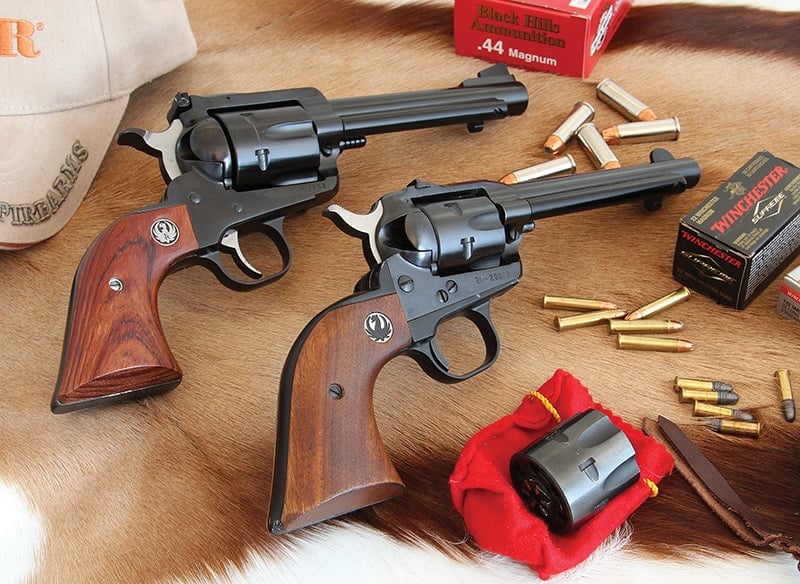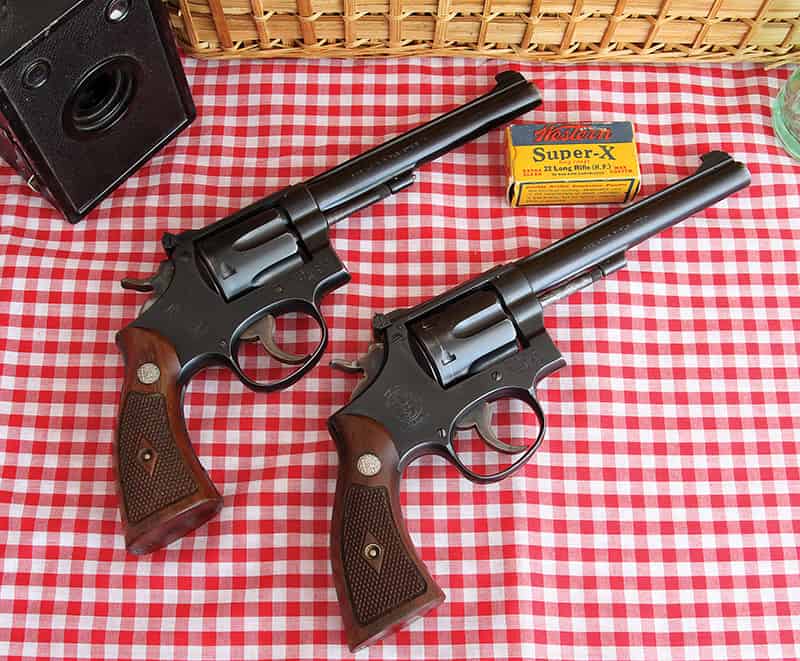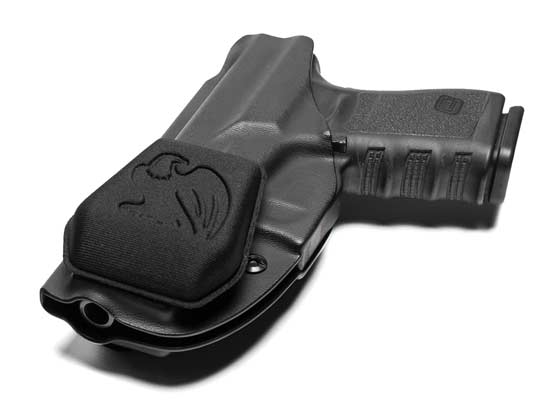Sub-Caliber Sense
So you have a quality centerfire handgun for personal defense. Should you have a .22-caliber version as well? The obvious advantage is the lower cost of ammunition. Cost aside, the mild report and light recoil of a .22 handgun is an advantage. It takes many repetitions to learn the basics of handgun shooting and muzzleblast and recoil tend to encourage bad habits.
I see a lot of new faces at the range lately, often shooting 9mm, .40 S&W and .45 ACP auto pistols. I also see a lot of flinching, blinking and yanking of triggers. Judging by their grimaces and the way they hold the gun (as far from the face as possible), a lot of shooters seem to find the whole experience unpleasant. In my experience, novice shooters progress more quickly when shooting a .22. They enjoy shooting more, practice more often and learn basic shooting skills at a faster pace.
But there are a few negatives as well. The .22 cannot completely replace the centerfire, and can in fact teach a bad habit or two itself. The .22 can be managed with a light grip. Shooting a centerfire, the shooter needs to grip the gun strongly enough it won’t shift in the hand during recoil. In my experience, this hasn’t been a problem. Most new shooters hold a handgun with about the same grim determination they would hold onto a rope keeping them from being swept over Niagara Falls.
Fast, accurate shooting with a centerfire requires the shooter to learn recoil management and timing. Recoil management is the process in which the gun fires, lifts in recoil and tracks smoothly back to initial position, ready for the next shot. Timing means the gun indexes back on target with the trigger reset and prepped, ready for the next shot.
The only way to learn management/timing with a centerfire is to shoot a centerfire. But keep in mind, management/timing with a .357 Magnum revolver doesn’t translate well to a 9mm semi-auto. You need to practice with what you carry. Nonetheless, when you reach the stage where it starts to really matter, you’re already shooting at a high level of competency, and the .22 will help get you there.
Another minor drawback of .22s is reliability. I love my .22s, but it’s unrealistic to expect the same reliability from a .22 you would from a quality 9mm. The .22 LR cartridge has a rim, and its proportions are long relative to diameter. Both factors make feeding less reliable. Even in a revolver, where reliable feeding/ extraction isn’t an issue, .22s require a solid firing-pin strike and strong mainspring, meaning a heavier double-action pull.
Rimfire ignition is also less reliable than centerfire ignition. A dud round is extremely rare with factory centerfire ammunitionbut I’m not surprised to get a dud or two in a brick of 500 .22 LRs.
Alternate Ideas
Conversion units (if available for your centerfire) are an excellent choice. If not, select a .22 similar to your centerfire. Both handguns should have the same basic trigger action: single action, double action or striker fired. I’d consider grip angle next in importance. With every shot, the neural paths are learning to hold the gun a certain way, and it should be the same for both guns. Nice to have, though not deal breakers to me, are similar weight and balance, similar operating controls (manual safety if present, magazine release, slide stop), and similar sights.
I appreciate some people only want one handgun for personal defense. They may have stretched the budget to purchase it and aren’t really keen on buying another. If so I suggest buying a .22 (new or used), shooting a brick or two of ammunition a month with it for 6 months or so, then selling it.
With a quality .22 you aren’t going to lose a lot of money, especially if you bought used, and your gun handling and shooting skills will be greatly improved. You’ll still have to shoot regularly (and possibly dry-fire, but that’s another story) with your centerfire to maintain a reasonable skill level, but you’ll have saved a lot of money getting there.






